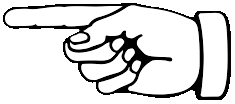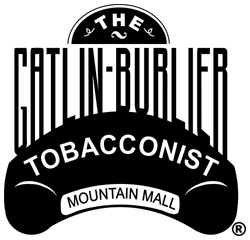You must be 21 years old or older to purchase tobacco products in Tennessee. Other laws and restrictions may be in place. You should be aware of and compliant with you local regulations.
- Home
- Pipes & Tobacco
- The Humidor
- The Lighter Case
- The Chew Bar
- The Cigarette Stand
- Tobacco Cover Up
- Tobacco Politics
- Smokin' Links
- Contact Us
 Age Verification
Age Verification
GATLINBURLIER
TOBACCONIST
~
Mountain Mall
611 Parkway - D Level
Gatlinburg TN 37738
800.862.2204
MENU
 Our menu
Our menuThe Truth About Cigarettes.
 Only the Readers Digest, which had previously carried
anti-cigarette articles responded in a positive way to his
attempt to make the public aware that the brown stuff in the
middle of the cigarette was not 100% leaf tobacco.
Only the Readers Digest, which had previously carried
anti-cigarette articles responded in a positive way to his
attempt to make the public aware that the brown stuff in the
middle of the cigarette was not 100% leaf tobacco.
In the early 1980's the Government foolishly encouraged people to switch to low tar cigarettes without warning them that the word tar had relatively little meaning. Another way to say it is that it would take tons of horse poop to truly disrupt the ecology of a large pond nestled away in the isolated mountains, while a teaspoon of plutonium 231 would be enough to change that ecology forever. So it is with tar.
'Tar is as Tar does' to paraphrase Forest Gump. The explanation as to why a greater proportion of the population smoked during your grandfather's days and yet had far fewer smoking related illnesses and far fewer types of smoking related diseases is easily found in the analysis of the chemical make up of tar created from burning tobacco verses the tar created from burning chemical additives.
Over the next 18 years, the information which should have been disclosed to the American smoking public was hidden away from them by use of an intricate web of laws designed to keep this information hidden even from the U.S. Congress. The fair and open debate over cigarettes was closed with the death of the FCC Fairness Doctrine and, as a result, smokers were deprived of their right to consumer information.
After attempting to generate public debate by petitioning the Donahue Show to host an open discussion of the issues, Dr. Lapides undertook a last ditch effort to bring the fact that cigarette and tobacco meant different things to the public's attention by going on a 22 day hunger strike.
The two most consequential results were that the GRAS (Generally regarded as safe) list of allowable chemical additives for cigarettes production was removed from its the safe which held it since 1971 and read into the Congressional Record. On the basis of a call from the ABC News show, Day One, Dr. Lapides ended his hunger strike, and ABC NEWS produced a story which, however critical of the cigarette manufacturers, still broke the 25 year ban on the discussion of cigarette manufacturing over the public air waves.
ABC was promptly sued following the airing of the program because, rather than sticking to the information that they had, they simplified the appropriate statements to say that the cigarette producers spiked their cigarettes with nicotine.* Still the production of the ABC News Day One program was the watershed which, if repeated, would open the door for attempts to reinstitute the 'Fairness Doctrine' and thus full public debate on smoking. This is something that the large cigarette producers would probably like to avoid and a $10,000,000,000 lawsuit would surely stop.
Want to Quit Yet?
*Actually, other chemicals exist which influence the 'addictive' effect nicotine, and there are still others which mimic the effects of nicotine. Although no proof that these chemicals are used in the production of cigarettes, synthetic or reconstituted tobacco can be supplied, one can imagine that they were invented and protected by patents so that they could be used.

 Click Here if you smoke cigarettes !
Click Here if you smoke cigarettes !
